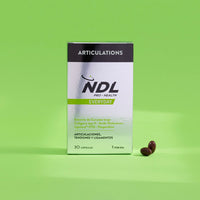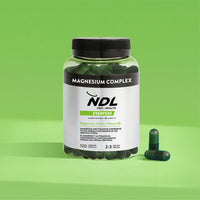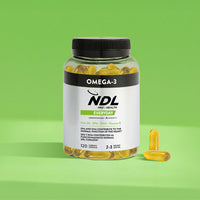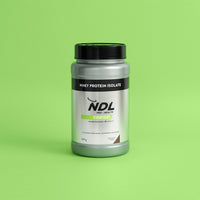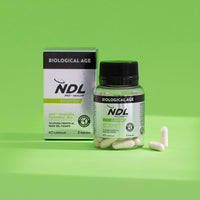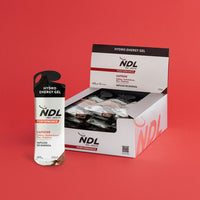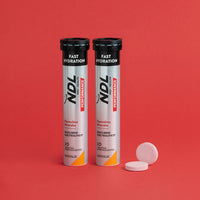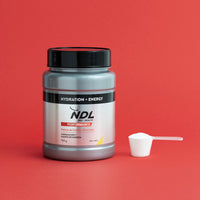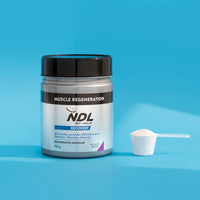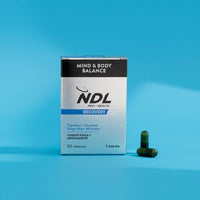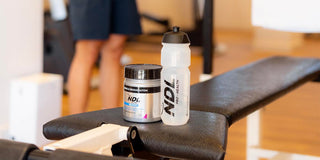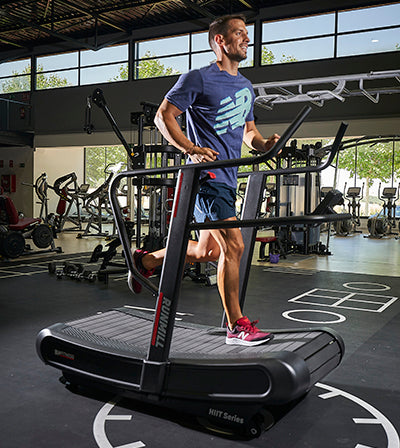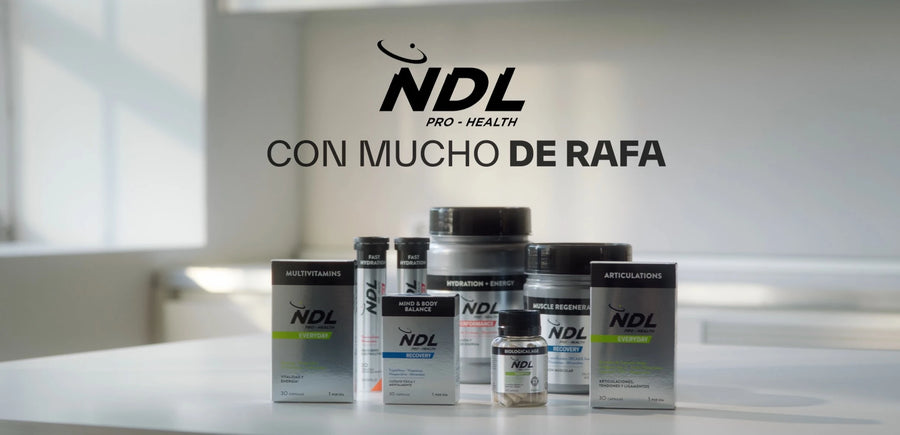Featured Products
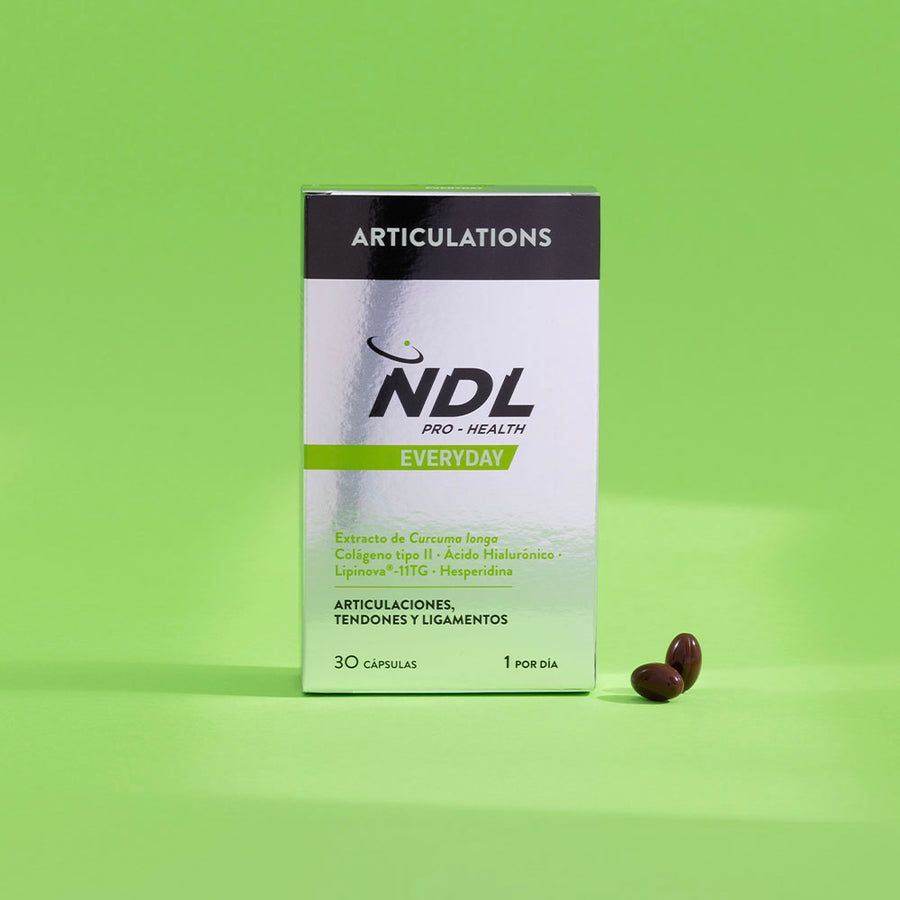
Articulations
See product
Fast Hydration
See product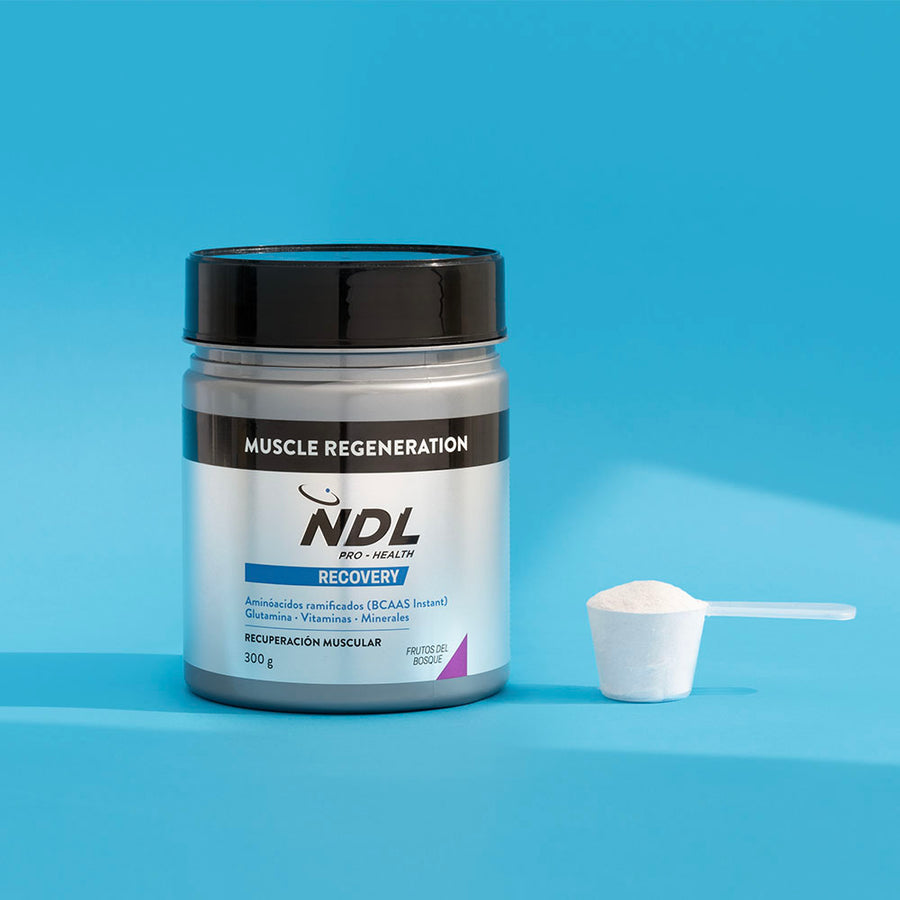
Muscle Regeneration
See product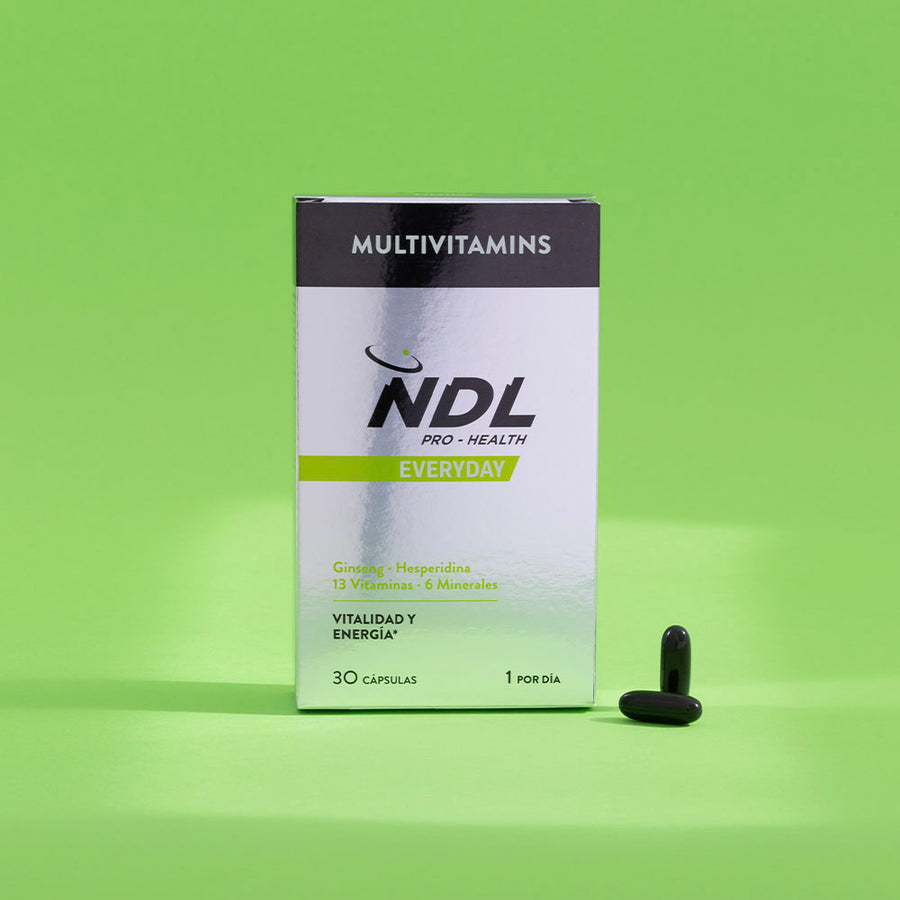
Multivitamins and Minerals
See productHigh-intensity routines are all the rage. In the last decade they have always been positioned within the lists of fitness trends and if we consider the benefits that are achieved by enhancing them, it is not surprising. But what is the reality of these routines? Are we really doing HIIT? Where do these workouts come from?
The creator of this method was the scientist Izumi Tabata and it was originally designed to improve the aerobic capacity of the Japanese speed skating team. The study consisted of cycling training with differences in intensity. One group would perform at an intensity of 70% of VO2Max (maximal oxygen volume) for 60 minutes at a time and the other group would do a workout consisting of 8 work sets of 20 seconds at an intensity of 170% of VO2Max* with 10 seconds rest between sets, for a total work time of 4 minutes.
The conclusions of this study revealed that high intensity training significantly improved both aerobic and anaerobic capacity.
* (In reality, Izumi Tabata was presumably referring to 170% of the intensity corresponding to the maximum oxygen consumption, since once 100% of VO2Max has been reached, it is not possible to continue to increase this figure as it is no longer possible to use more oxygen. It is, therefore, a poorly defined concept at the time, which is logical, since the technological means we have today were not available).
As you can see, this protocol has little or nothing to do with what is known today as the Tabata method and since 1996 there have been many variants and different interpretations of it. The original design was intended for high-performance athletes and was based solely on aerobic work (on bicycles) at different intensities. However, now there is a much broader proposal of this type of routines, using exercises of all types, including strength. This is neither good nor bad, but obviously the benefits of the original study are not going to be obtained if the set guidelines are not followed and that will be really complicated for most of us.
As his method became popular, Tabata himself went so far as to say that it was a great way of working for high-level athletes, but that novices should exercise with caution, since even at the beginning of their training sessions, professional athletes suffered a great deal from it.
Why is the Tabata method so attractive?
The short duration and the intensity achieved due to the short rest time are two aspects that make this form of training has gained so many followers. With the necessary adaptations, it should be noted that it is a very interesting form of training when you do not have too much time or material because with the use of your own body weight you can achieve very positive results.
Remember, you only have to perform the relevant exercise for 20 seconds, rest for 10 seconds and start again to complete a total time of 4 minutes.
You can do several tabatas chained together to complete the exercise routine that you have programmed. If you choose this method, remember to include exercises that involve the main muscle groups of the body, both upper and lower body, without forgetting the core. And if you want to make adaptations of the original method, it would be ideal if you could design your own tabata yourself, modifying the work and rest times according to your level of fitness to make the practice not only productive, but also safe and effective.
Okay, what if I'm not ready to do a Tabata or high-intensity routine?
Martin Gibala, a scientist at McMaster University in Canada, conducted an experiment in 2014 with sedentary men and women who underwent HIIT-type training sessions, which consisted of 20 seconds of pedaling on a stationary bike at the maximum possible speed. After those 20 seconds came 40 seconds of gentle pedaling. After six weeks of performing three of these sessions per week (18 minutes each) the volunteers had significantly improved their health and aerobic fitness, as well as their blood pressure and muscle mass percentage.
You may think that this type of HIIT is a bit "light" but I just want to use it as an example to justify that its use can be suitable for anyone. The good thing about these routines is that the intensity is determined by your own physical condition. This training model based on periods of high cardiac activity (80 or 90% of HRmax) with other periods of low intensity (50 or 60% of HRmax), does not respond to pre-set intensities that everyone has to reach. For some people, walking very fast may already be a high effort, but for others, running at 3 minutes per km may be a walk.
What are the benefits of this type of routines?
You burn more fat. These routines have a higher percentage of effectiveness in achieving the loss or reduction of adipose tissue, especially if we compare them with low-intensity exercises that are extended in time (running or cycling for 60 minutes, for example).
They improve aerobic and anaerobic capacity. Due to its typology, with this type of training we do not only attend to criteria of gaining strength, muscle mass or endurance. Incomplete rests and anaerobic exercises improve this capacity along with aerobic capacity, something fundamental to improve our performance and physical form, something you will be grateful for when you are completing higher intensity phases in terms of load.
They accelerate our metabolism. It has also been shown to be very useful in accelerating our metabolism. Thanks to this, our body consumes more calories during the day. It is as if we were transforming our body from a diesel engine into a gasoline engine body.
What do I do when I can't get better?
When we follow a training plan we do it pursuing specific goals. For days, weeks, even months, we strive to achieve our goals, but sometimes, for various reasons, we do not achieve the desired results and that is the time to analyze the reasons and make some changes.
There are many mistakes we can make when following a training plan. Speed of execution, rest times, number of repetitions, workload... all this is very important but in a great number of occasions the failures lie in everything else. Rest and nutrition play a very important role. Remember, the success or failure of a plan is determined by the sum of all the elements that compose it. It is useless to choose the most impressive exercises if we do not pay attention to a correct frequency of stimuli, an appropriate load for each moment, optimal rest times and good nutrition.
What is the problem?
The problem is that, with the current pace of life and the abuse of fast food and ultra-processed foods, it is increasingly complex to obtain from our diet the necessary nutrients to perform well. For example, magnesium is essential to achieve a good rest and also to ensure the optimal state of our muscles, as well as vitamin C, which helps us fight free radicals that appear when we perform physical activity of a certain intensity. It is also difficult to ingest good amino acids after training, especially when we fit our workouts in between meetings or at lunchtime or at the beginning or end of the day. This is where my recommendation is that you go to a good range of sports supplementation that gives you everything your body needs to perform well and keep up the pace. This is essential because, when you seem to have less energy and when you feel like "abandoning your routines" is where this type of aid gives you the necessary push to keep your momentum going and allows you to continue doing what you love, training for life.
Here is a recommendation of HIIT type routines for you to carry out.
Choose from one of the proposed high intensity exercises:
- Running
- Rowing
- Elliptical Bicycle
- Stationary Bicycle
Alternate high intensity exercises (20 to 40 seconds depending on your fitness level) with a set of 10 repetitions of each of the following:
- Push-ups (2-4 sets of 10 repetitions)
- Squats (2-4 sets of 10 repetitions)
- Lunges (2-4 sets of 10 repetitions)
- Prone plank (2 -4 sets of 10-20 seconds)
Exercises
Running |
Rowing |
Bicycle |
Push-ups |
Squats |
Lunges |
Prone Plank |
How can good sports supplementation help me achieve my goals?
As I said before, it is becoming increasingly difficult to obtain all the minerals, vitamins, proteins,... naturally through food intake. This is due to our lifestyle and also to the difficulty of reconciling our family, sports and professional life. Precisely for this reason, if we choose a good sports supplementation we can achieve many necessary improvements, that push that sometimes we need to feel in "top shape". To do this you must choose supplements that take care of the formulation of the ingredients and monitor the entire quality process, our body is a perfect machine that requires the best care to work, remember that we only have one body and we want to do millions of kilometers with the best performance.
Our recommendation for a healthy and active life is as follows
Daily life presents moments of intensity and activity that require an extra supply of vitamins and minerals to feel full of energy and in top form.
NDL Pro-Health Biological Age is a food supplement composed of AM3® technology and fortified with zinc, a mineral that helps protect cells from oxidative stress and supports the normal functioning of the immune system.
To improve and accelerate muscle recovery
This is a food supplement with a formula based on branched amino acids, glutamine, vitamins and minerals that stimulate muscle regeneration and contribute to replenish glycogen that restores energy. It is extremely safe and effective and will give you the option of not slowing down when you need it most.
Bibliography
- Borges Viana, R., Andre Barbosa de Lira, C., Pedro Araujo, J., Silveira Coswig, V. Tabata protocol: A review of its application, variations and outcomes. Clin Physiol Funct Imaging (2019) 39, pp1–8
- Gillen JB, Gibala MJ. Is high-intensity interval training a time-efficient exercise strategy to improve health and fitness? Appl Physiol Nutr Metab 2014;39(3):409-12.
- Gillen JB, Percival ME, Ludzki A, Tarnopolsky MA, Gibala MJ. Interval training in the fed or fasted state improves body composition and muscle oxidative capacity in overweight women. Obesity (Silver Spring) 2013;21(11):2249-55.
- Gómez Piqueras, P., Sánchez González, M.E. Entrenamiento de intervalos de alta intensidad (HIIT) en adultos mayores: una revisión sistemática. Revista de Ciencias del Ejercicio y la Salud, ISSN-e 1659-4436, ISSN 1409-0724, Vol. 17, Nº. 1, 2019
- Vidal Inglés, D., Valero Valenzuela, A., Sánchez Alcaraz Martínez, B.J. Efectos del entrenamiento interválico de alta intensidad en corredores. Revista de entrenamiento deportivo. Journal of Sports Training, ISSN 1133-0619, Tomo 30, Nº. 3, 2016, págs. 23-28
- Viñuela García, M., Vera Ibáñez, A., Colomer Poveda, D., Márquez Sánchez, G., & Romero Arenas, S. (2016). Efecto de 12 sesiones de un entrenamiento interválico de alta intensidad sobre la composición corporal en adultos jóvenes. Nutrición Hospitalaria, 33(3), 637-643.
- Tabata, I., Nishimura, K., Kouzaki, M., Hirai, Y., Ogita, F., Miyachi, M., Yamamoto, K. Effects of Moderate-Intensity Endurance and High-Intensity Intermittent Training on Anaerobic Capacity and VO2max. Med Sci Sports Exerc. 1996 Oct;28(10):1327-30.

He is currently sports director at the University Alfonso X el Sabio, where he combines his functions with the operations management of UAX Rafa Nadal School of Sport. He is a regular contributor to magazines such as Sportlife, Triathlon, Corredor..., where he demonstrates his knowledge about the world of fitness, physical activity and health. He has a degree in Sports Science along with a master's degree in Physical Activity and Health, specializing in the treatment of injuries, physical activity for health and nutrition for athletes.
